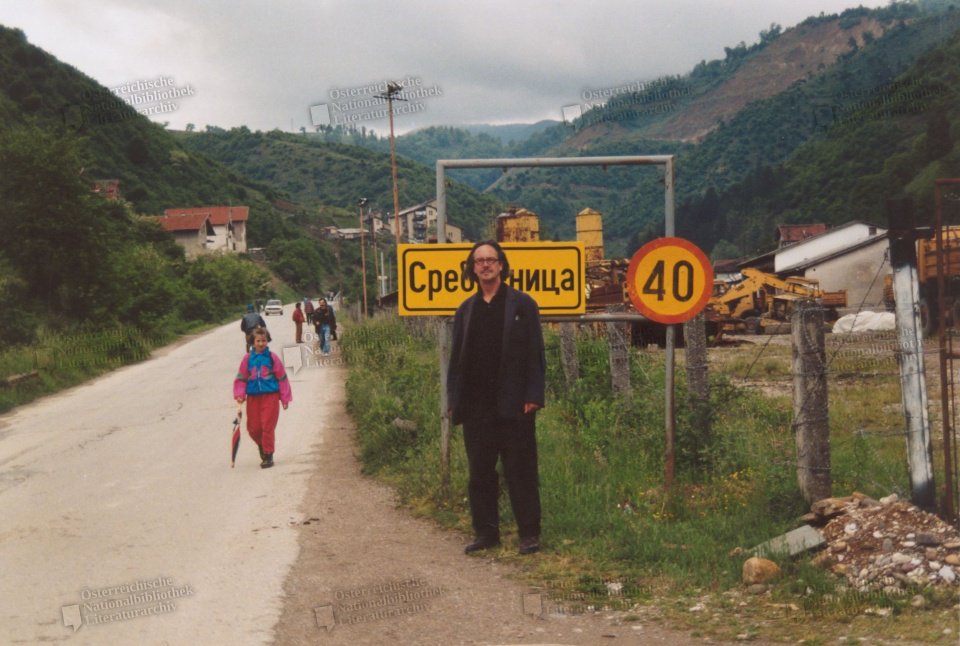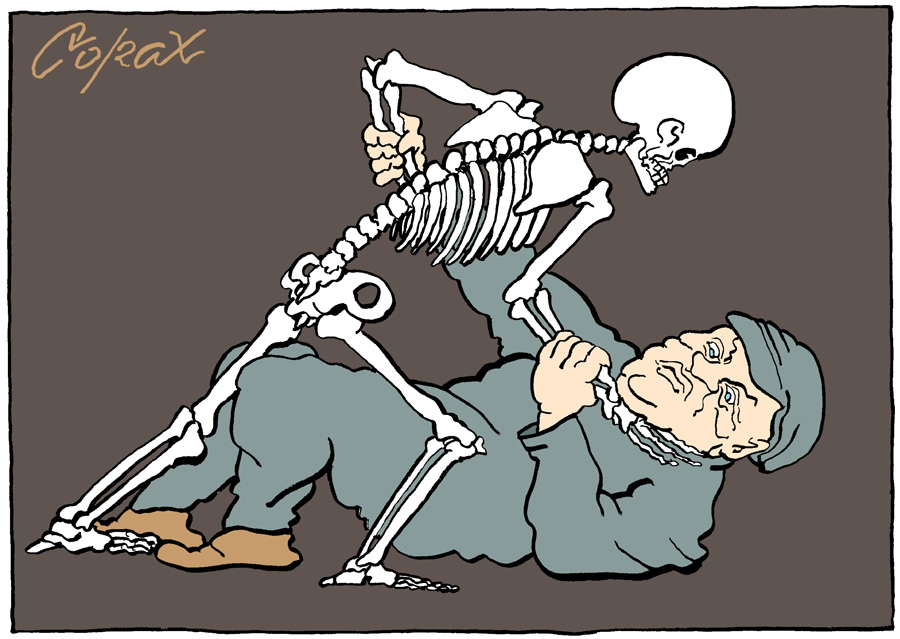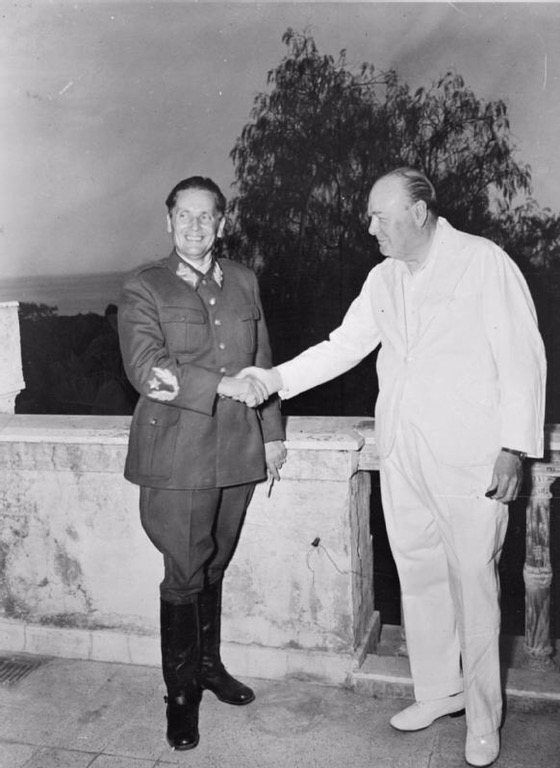 Did we warn you? Well, yes, we did. In February 2019, when Dodik engineered the appointment of a couple of commissions to revise the history of war crimes committed in the violent redefinition of the territory of Bosnia and Herzegovina, a group of us released an open letter describing how we thought the effort would turn out. In it we outlined the difference between successful and unsuccessful investigative commissions:
Did we warn you? Well, yes, we did. In February 2019, when Dodik engineered the appointment of a couple of commissions to revise the history of war crimes committed in the violent redefinition of the territory of Bosnia and Herzegovina, a group of us released an open letter describing how we thought the effort would turn out. In it we outlined the difference between successful and unsuccessful investigative commissions:
In the best cases, commissions have succeeded in contributing credible information to the historical record and assisted in the process of building peace. In the worst cases, they have substituted for more ambitious programmes for achieving justice and have provided one-sided or selective versions of historical experience.
We drew on the experience of failed commissions in the region, some of which produced reports and some of which did not, to identify the shared characteristics of failed ones:
In general where initiatives in the region have failed, it has either been because a lack of public legitimacy or because of an appearance of partiality or insincerity. The worst efforts have been those which have attempted to trivialise crimes as “inevitable” byproducts of war, to dissolve them into the mud of relativisation, or to minimise them by broadening contexts to expand into a variety of irrelevant considerations. Common to every unsuccessful initiative is disrespect for the needs and experiences of victims.
And we offered a prediction about what the latest set of stunts by RS would produce:
The strategy here is to turn legitimate grievances into material for trivialising grievances suffered by others.
And now we have the first product, against which we can test our prediction. Nobody can be too happy about the fact that we were right.
The “Independent International Commission of Inquiry on the Suffering of the Serbs in Sarajevo between 1991 and 1995,” appointed by some sort of appendage of Milorad Dodik in 2019, released its report (although it is dated October 2020) yesterday. The report has a lot of pages — 1420 of them if we want to be precise, although some of them are filler and some of them are blank. But don’t be too overwhelmed by the number of pages. The sections that actually discuss “the suffering of the Serbs in Sarajevo between 1991 and 1995” are fairly limited. They occur between pages 743 and 806, and to a lesser extent between pages 926 and 966. The rest of the report is concerned with other topics.
Let’s start with the suffering that is in the title of the report. Is there a case to answer here? Sadly, yes, there is. Particularly at the beginning of the war, when the defence of Sarajevo against its siege had to be organised, much of the work of marshalling and deploying force was taken up by criminal groups, who saw an opportunity to steal, extort, intimidate, perform idiotic hatreds, and generally be mean. They did target civilians of Serb ethnicity, abuse and kill some number of them, and generated protests from domestic law enforcement and international observers, much of which did not meet with adequate response on the part of state authorities. At the same time, it is worth remembering that the largest part of the departure of Serbs from Sarajevo was the work not of the people they thought of as their enemies, but of the people who promoted themselves as their supporters.
Does the report shed light on the incidents that provided with it with a title? Unfortunately, not a lot at all. They took a very small number of witness statements, and most of those were some from sympathetic politicians or politicians-manque rather than from victims. They added to these a modest number of statements made to a variety of other institutions over the past 25 years, which they included in an appendix. Otherwise what the report has to say about “the suffering of the Serbs in Sarajevo between 1991 and 1995″ is largely previously published material that was already known. Do we have new insight into the number of victims involved? No. Do we have new insight into the perpetrators and possible connections with higher portions of the chain of command? No. Do we have revelations of previously unknown cases? No. Has the report provided any of the things you might hope for from a pompously announced report? No.
So that is the balance of the 103 out of 1420 pages that actually deal of the topic. Yes, we did tell you so two years ago, but all the same, sorry, it is not much.
You may be curious, then, to know what comprises the remaining 92% of the text of the report. Well, let’s go chapter by chapter. Chapter 1 is titled “General Historical Introduction.” Imagine you have an undergraduate not too familiar with research presentations who wants to write about something that has nothing to do with the experience of Bosnia and Herzegovina in the Ottoman period. You will tell the student to stick to the topic, and that they do not have to say anything about the Ottoman period. But the student will, possibly feeling conscientious, say oh no, I really have to give an overview of the Ottoman period. And they will proceed to give you 137 pages of the most amateurish summary of the Ottoman period, reconstructed from the most mediocre and tendentious history texts that you never assign for a good reason. Well, that’s Chapter 1.
Should we be more hopeful about Chapter 2, then? We should not. This is a bit of cod psychology that reads as though it was actually written by a cod. You think I am joking. but I am not joking. Imagine that an addled mind has somehow managed to weave together visions of Plessy, Ferguson, eugenicists, a sexed up version the MMPI they have actually called the “Slavic-Language Personality Inventory-360”, and what must be an extra large Big Pharma into a stream of semiconsciousness narrative. If you imagine this well enough there will be no need to read Chapter 2.
Moving on to Chapter 3. This chapter is about a plan to “re-establish a great Islamic state based on sharia law stretching from Morocco to the Philippines, thus abolishing present national boundaries.” Apparently the plan is spearheaded by Bakir Izetbegović. Scratch your head for a moment thinking of the wonderful couscous and adobo dishes that this great state could produce, and wondering that anybody might think that Bakir Izetbegović has ever had a political idea. Don’t spend too much time on either of these thoughts, you might fall into the hole.
Will things get better with Chapter 4? They will not. Here you will read about the way in which all of global media concentrated all of their energy on demonising Serbs, describing VRS as an aggressor for no other reason than the fact that they were. The exceptions to this included, who are to be honoured as defenders of truth, are comprised by a gaggle of charlatans too vile to name. The neat thing about this chapter is that it has some charts with numbers, which will be attractive to people who like numbers, unless they like numbers a lot and can see that this is not the way to use numbers.
Chapter 5 is the place where people who began reading the report because they thought they might find something about the topic signalled in the title would expect to find material related to the topic signalled in the title. And they do, sort of, beginning more than halfway through. Unfortunately the material that is offered is in general already known, is incomplete, and is served up tendentiously. The people who began reading thinking that there would be some material about the topic that is signalled in the title could be forgiven for giving up here.
This would be a mistake, because Chapter 6 is the highlight of the report. You will understand that expectations will have been considerably lowered by the time a reader has got this far. What makes it a highlight is a selection of small things: in general font sizes are consistent throughout the chapter and some attention appears to have been paid to typesetting. The person who wrote it appears to have some familiarity with the structure and syntax of a research presentation. The bibliography is, for once, in a recognisable bibliographic format. Melem za dušu, if you can ignore the fact that most of the material is off topic and the stuff that is on topic is misrepresented. But at this point you will take what you can get, won’t you?
Chapter 7 is conclusions. We don’t need to spend a lot of time on Chapter 7 because all of the conclusions are foregone.
The report has not got a lot of media coverage or other types of attention. This blog post is probably the most attention it will get. That fact is probably just fine, but you know, RS has (or does not have) another report coming. Heaven help us all.


 The film
The film 
 When Peter Handke got the Nobel prize for literature, reaction was immediate. Večernje novosti, Serbia’s answer to the Daily mail, rushed in with an
When Peter Handke got the Nobel prize for literature, reaction was immediate. Večernje novosti, Serbia’s answer to the Daily mail, rushed in with an 
 There are a lot of questions to be considered in the aftermath of the delivery of the ICTY’s last trial verdict. Here are some thoughts on four of them.
There are a lot of questions to be considered in the aftermath of the delivery of the ICTY’s last trial verdict. Here are some thoughts on four of them.
 In keeping with the tradition of making spoken full texts available, this is the chat I will be giving this afternoon at this nice conference with our friends in Regensburg. If you have not been able to attend you can use it for vicarious enjoyment, and if you are here you can read along with me to achieve an effect of collective effervescence.
In keeping with the tradition of making spoken full texts available, this is the chat I will be giving this afternoon at this nice conference with our friends in Regensburg. If you have not been able to attend you can use it for vicarious enjoyment, and if you are here you can read along with me to achieve an effect of collective effervescence. Nobody knows what to expect in international policy from the incoming Trump administration (there! I said it!), least of all the people involved in it or the profoundly ignorant Mr Trump himself. There have been early indications that the incoming US president wants to align foreign policy with Russia and to provoke an entirely unwanted confrontation with China, and he seems to have developed a fondness for death squads in the Philippines. As far as the Balkans are concerned, we don’t know much, except for a weird incident during the campaign when a minor out of work actor faked an interview with a Serbian magazine that had Trump echoing many of the sophisticated and refined views of Vojislav Šešelj. The most we can say so far is that Mr Trump’s recruitment of a team of far rightists, sabre-rattlers and Russian agents indicates a change of international policy orientation will probably be under way. But nobody can project with any precision what the character of that change will be – which means the policy press is bound to be filled with suggestions from people looking to fill some ears of appointed officials and some pockets of their own.
Nobody knows what to expect in international policy from the incoming Trump administration (there! I said it!), least of all the people involved in it or the profoundly ignorant Mr Trump himself. There have been early indications that the incoming US president wants to align foreign policy with Russia and to provoke an entirely unwanted confrontation with China, and he seems to have developed a fondness for death squads in the Philippines. As far as the Balkans are concerned, we don’t know much, except for a weird incident during the campaign when a minor out of work actor faked an interview with a Serbian magazine that had Trump echoing many of the sophisticated and refined views of Vojislav Šešelj. The most we can say so far is that Mr Trump’s recruitment of a team of far rightists, sabre-rattlers and Russian agents indicates a change of international policy orientation will probably be under way. But nobody can project with any precision what the character of that change will be – which means the policy press is bound to be filled with suggestions from people looking to fill some ears of appointed officials and some pockets of their own.
 Everyone will tell you, Politika is the oldest newspaper in the Balkans. They say it is influential too, but this is probably an exaggeration. Of the remaining people who actually read newspapers, more seem to prefer the lurid tabloids chock full of conspiracy theories (Politika does okay on that count) and assorted body parts of people who are recognisable from television. So what is the grey mass good for? Well, like “newspapers of record” in other countries, it is a place where editors perform the boundaries of what officials think people ought to know about, where respectable-seeming people give a pretty gloss to whatever line of thinking is dominant at the moment, and where folks who want to cement their wobbly positions in some future elite display their fetishes. It also has a surprisingly good –literate, diverse and comprehensive – arts and culture section on the weekends. Ah yes, and its weather predictions and death notices are impressively accurate.
Everyone will tell you, Politika is the oldest newspaper in the Balkans. They say it is influential too, but this is probably an exaggeration. Of the remaining people who actually read newspapers, more seem to prefer the lurid tabloids chock full of conspiracy theories (Politika does okay on that count) and assorted body parts of people who are recognisable from television. So what is the grey mass good for? Well, like “newspapers of record” in other countries, it is a place where editors perform the boundaries of what officials think people ought to know about, where respectable-seeming people give a pretty gloss to whatever line of thinking is dominant at the moment, and where folks who want to cement their wobbly positions in some future elite display their fetishes. It also has a surprisingly good –literate, diverse and comprehensive – arts and culture section on the weekends. Ah yes, and its weather predictions and death notices are impressively accurate.
